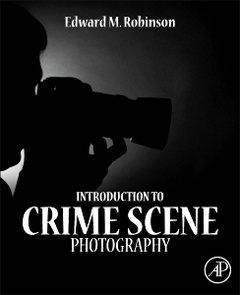Description
Introduction to Crime Scene Photography
Author: Robinson Edward M.
Language: English
Subject for Introduction to Crime Scene Photography:
432 p. · 19x23.3 cm · Hardback
Description
/li>Contents
/li>Readership
/li>Biography
/li>Comment
/li>
Introduction to Crime Scene Photography acquaints the reader with the essentials of basic crime scene photography techniques. It looks at the concepts related to composition and relates them to the types of photographs captured by crime scene photographers. It explains how to capture images based on the exposure settings chosen to produce the effect desired. It considers the techniques used needed to control and maximize Depth of Field (DOF), and reviews how the different lenses will affect an image.
Organized into seven chapters, the book begins with an overview of crime scene photography and composition, including the three cardinal rules of good photography. It then proceeds with a discussion of the benefits of bounce flash and how to utilize this technique to properly compose the subject of interest. It also explains how to capture any image necessary at the crime scene by combining the concepts of composition, nonflash exposure, DOF, flash exposure, and the use of various types of lenses. In addition, the reader is introduced to various energy sources and filters, digital processing of evidentiary photography, and legal issues related to photographs and digital images. Examples and illustrations are provided throughout to demonstrate how the concepts examined tend to form a sort of symbiotic relationship.
This text will benefit scene investigators and photographers, forensic consultants, forensic scientists, undergraduate students in forensic and/or criminal justice programs, law enforcement professionals, and anyone who wants to acquire the skills needed to be a successful crime scene photographer.
1. An Overview of Crime Scene Photography and Composition
2. Exposure
3. Focus, Depth of Field and Lenses
4. Electronic Flash
5. Energy Filters and Sensors: Ultraviolet/Visible/Near InfraredGerald B. Richards
6. Digital Processing of Evidentiary PhotographyDavid “Ski Witzke
7. Legal Issues Related to Photographs and Digital Images
- Contains over 350 high-quality 4-color images
- Rules of Thumb are included to highlight key concepts
These books may interest you

Crime Scene Photography 92.73 €



